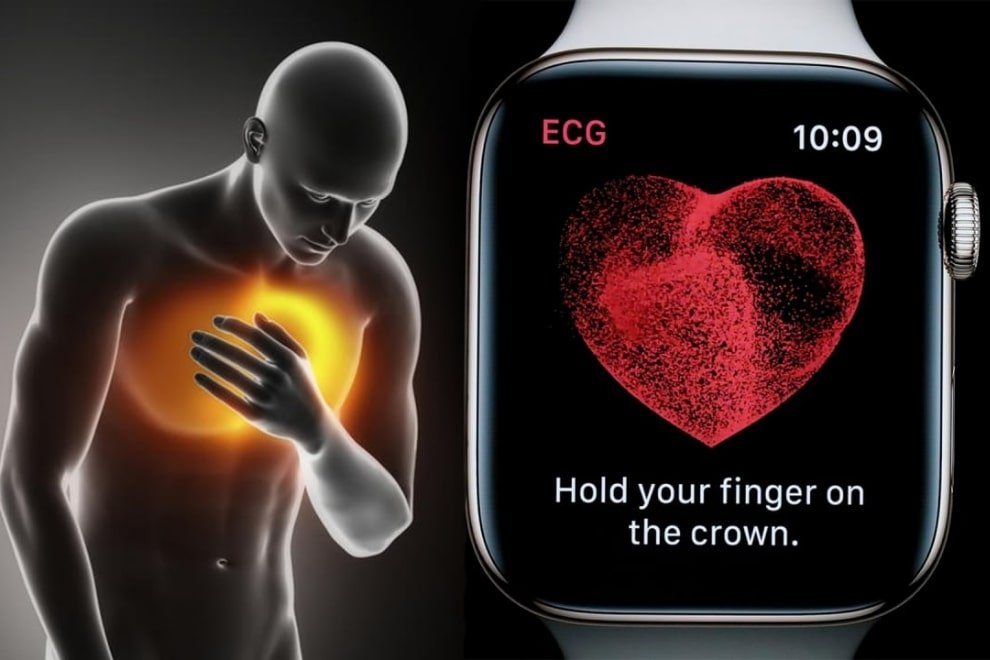Can a watch save your life? Yes, if it is an Apple watch.
Smartwatches are the second-most commonly used gadget after smartphones. The watch that is saving lives lately is Apple’s smartwatch. Internet is full of stories of people who are alive because of the watch which tends to make a curious angle, what is so special and unique that makes apple watch so liable compared to other smartwatch brands.
It’s a Health-Gear
Apple Watch is a high-tech gadget coupled with powerful apps. These apps encourage users to live a healthy lifestyle, the app runs in the background for basic regular checkups whether the user is active or inactive. It notifies early symptoms and alerts the user for a medical checkup. The app summarises the collected valuable data with date and time which helps the doctor to diagnose the disease.
Apple watch has three sensors; optical heart sensor, an electrical heart sensor/electrode, and Next-generation accelerometer and a gyroscope sensor.
• Optical heart sensor uses Photoplethysmography (PPG) that checks up heartbeat per minute(BPM). An average BPM of an adult is 60 to 100, this sensor monitors bpm and alerts the user in case of high, low, or irregular heart rate.
A 24-year-old man Adam Love from Australia was alerted by his Apple Watch that his heart rate during sleep was hitting 140 beats per minute (bpm). It was then when Love decided to visit a doctor and it turned out that he had a hole in his heart since birth that went undetected for 24 years. After a full medical examination, doctors found a serious lung condition in which his blood was found circulating in the right atrium instead of the left side. He went through surgery and recovered in 3 weeks.
• Electrical heart sensor/electrode is one of the three sensors that monitor electrocardiogram (ECG) electrical pulses generated from the user’s heart.
The sensor can classify atrial fibrillation and sinus rhythm but is unable to identify other conditions, like heart attacks.
For an instance Ed Dentel, a 46-year-old resident of Richmond, Virginia as soon as he updated his watch with the ECG app the watch started annoying him with Afib notifications and alerts. His heart was beating between 120bpm to 140bpm. Later on, he decided to pay a visit, feeling embarrassed Dentel shared that his watch was giving alerts after updates. A technician hooked Dentel to an ECG machine. Normally, it takes time to observe the reports and say something. He called the doctor and the doctor said, “You’re in AFib and the watch may have just saved your life”.
• Next-generation accelerometer and a gyroscope sensor for fall detection. The apple watch detects a hard fall it starts vibrating with alarm sound and displays alerts. If the user is conscious he/she has two options to contact emergency services or to stop the alerts by tapping on ‘I’m OK’ or pressing the digital crown. If Apple Watch detects that the user is still moving, it waits for the user to respond to alerts and won’t call emergency so until and unless the user is immobile for a minute it calls automatically.
After the call ends which means it is unanswered as the user is immobile, the watch sends a message to emergency contacts with the exact location.
Toralv Østvang, a 67-year old living in Norway was saved because of this feature in the apple watch. He fell in the bathroom, local emergency service got the message along with the location. Later on, after 30 mins rescue team arrived to save Toralv. He was unconscious and covered with blood but alive.
The bottom line is do you still think it is not worth it to buy a smartwatch.








